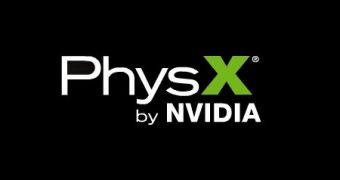PhysX can definitely be seen as one of NVIDIA's technologies that stirred the most controversy on the video and gaming market. While it definitely brings a high level of realism to games, this physics processing platform is not as popular as it could be because it only works on PCs that use an NVIDIA GPU for graphics rendering. While this would seem logical, it is not the only available approach.
GPU PhysX relies on an NVIDIA graphics processor to perform the necessary computation that leads to the simulation of physics in games. However, for a time, it was not mandatory that the same GPU, or another NVIDIA card, handle the graphics themselves. For instance, an end-user could buy a high-end ATI card, which did most of the job, and a low-end NVIDIA adapter exclusively meant to process PhysX. Some time ago, NVIDIA modified its drivers so that this was no longer possible.
Basically, this meant that only NVIDIA-exclusive gaming rigs could handle PhysX. NVIDIA cited quality assurance, development expense and business reasons as the causes behind this decision. What is more likely, however, is that the company's margins would have been affected if it had allowed its cheap video boards to work alongside ATI's DirectX 11 Radeon HD 5000 series. Whether this was the reason or not, it seems to have expired in the meantime.
As unbelievable as it may sound, Ngohq reports that the driver block that prompted a certain GenL to release an unofficial patch is not present in the 275.15 GeForce Drivers. It is not completely clear if this is intended or just a bug, but tests supposedly proved that hybrid PhysX configurations worked on Windows XP and Windows 7 x64. For NVIDIA, this may prove beneficial, as it would let it empty its inventories of older cards now that the GTX 400 Series is up and running.

 14 DAY TRIAL //
14 DAY TRIAL //